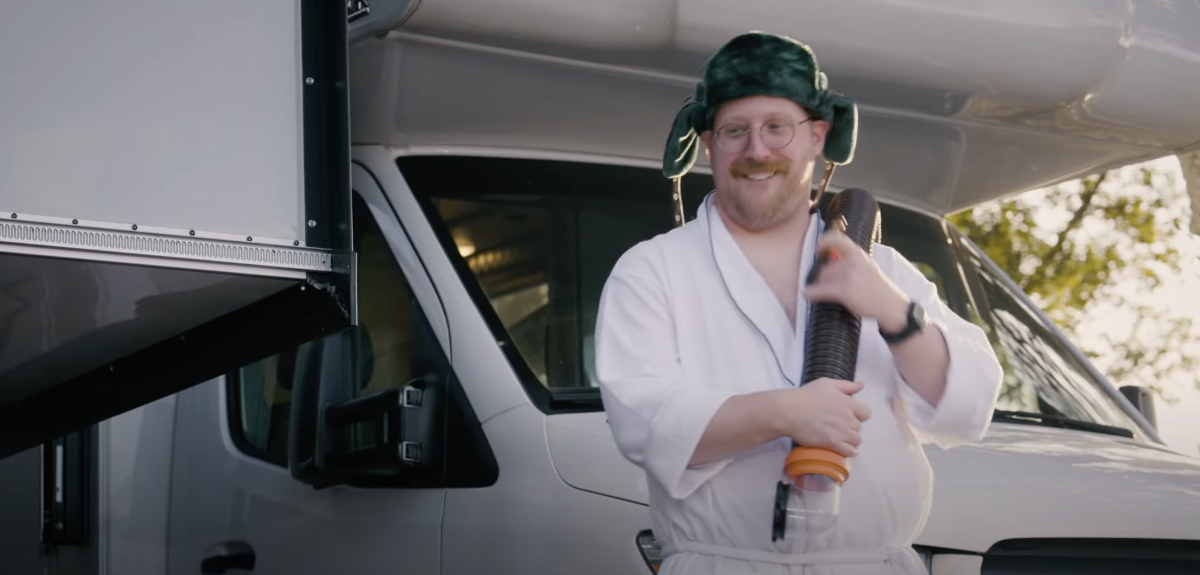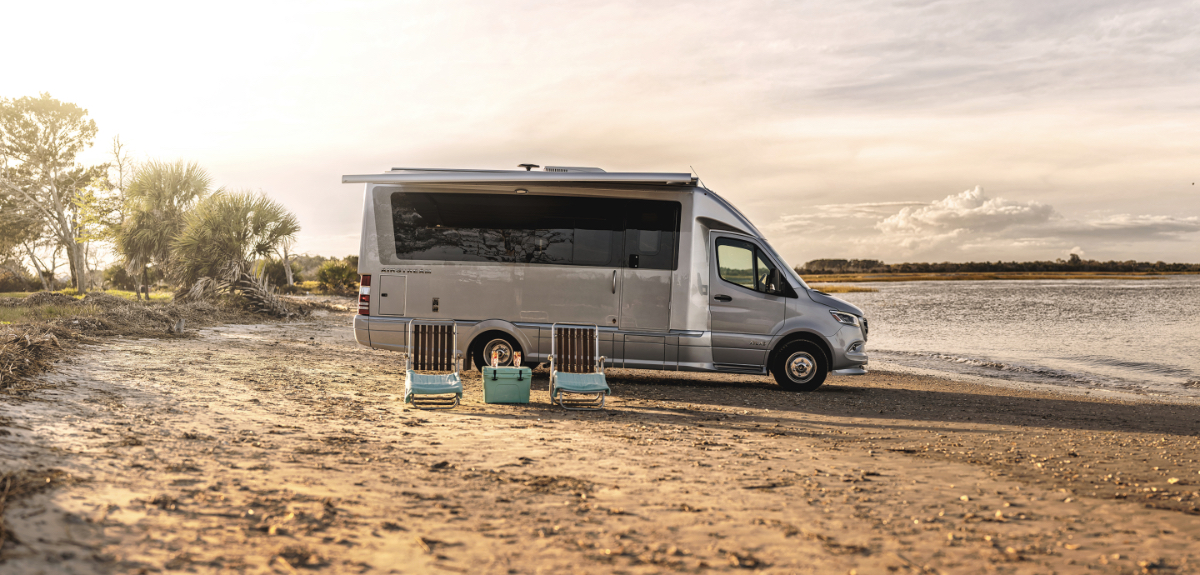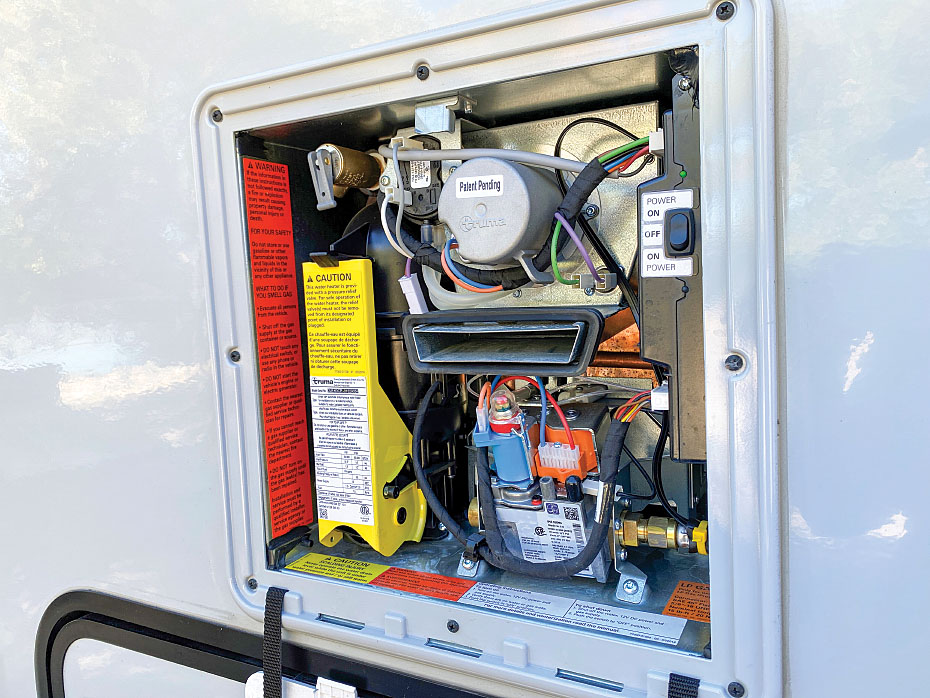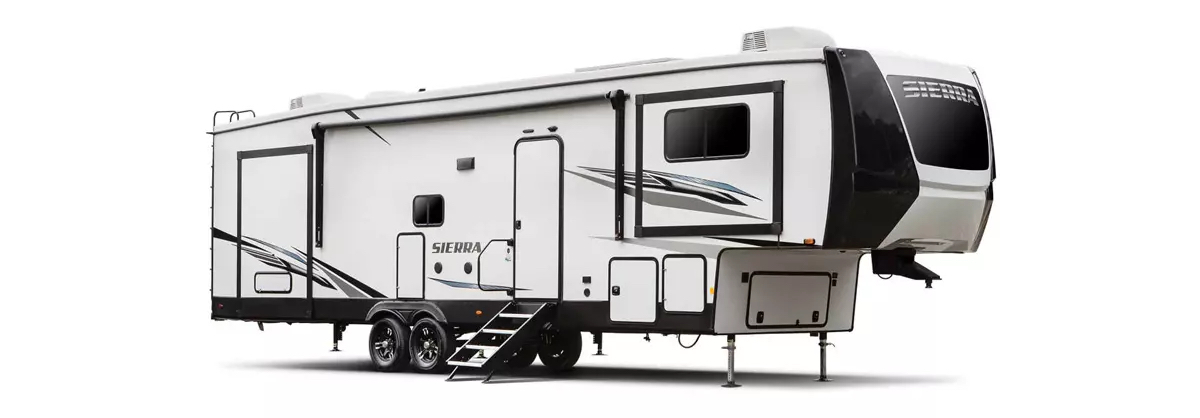The Florida RV SuperShow had a special guest this year that everyone, including us here at RV Magazine and RV.com, was eagerly waiting to see.
On opening day, January 18, crowds were headed toward the Winnebago set up in the morning to witness the unveiling of its eRV2, Winnebago’s second iteration of its all-electric Class B camper van.
As the show got underway, RV.com had the unique opportunity to get behind the wheel and see how the zero-emissions vehicle handled on the road. You can read more about the specs and details of the latest version of the electric vehicle here, including a technical breakdown of its power capabilities, range, and construction. Here are a few quick qualitative takeaways after an all-too-brief test drive.
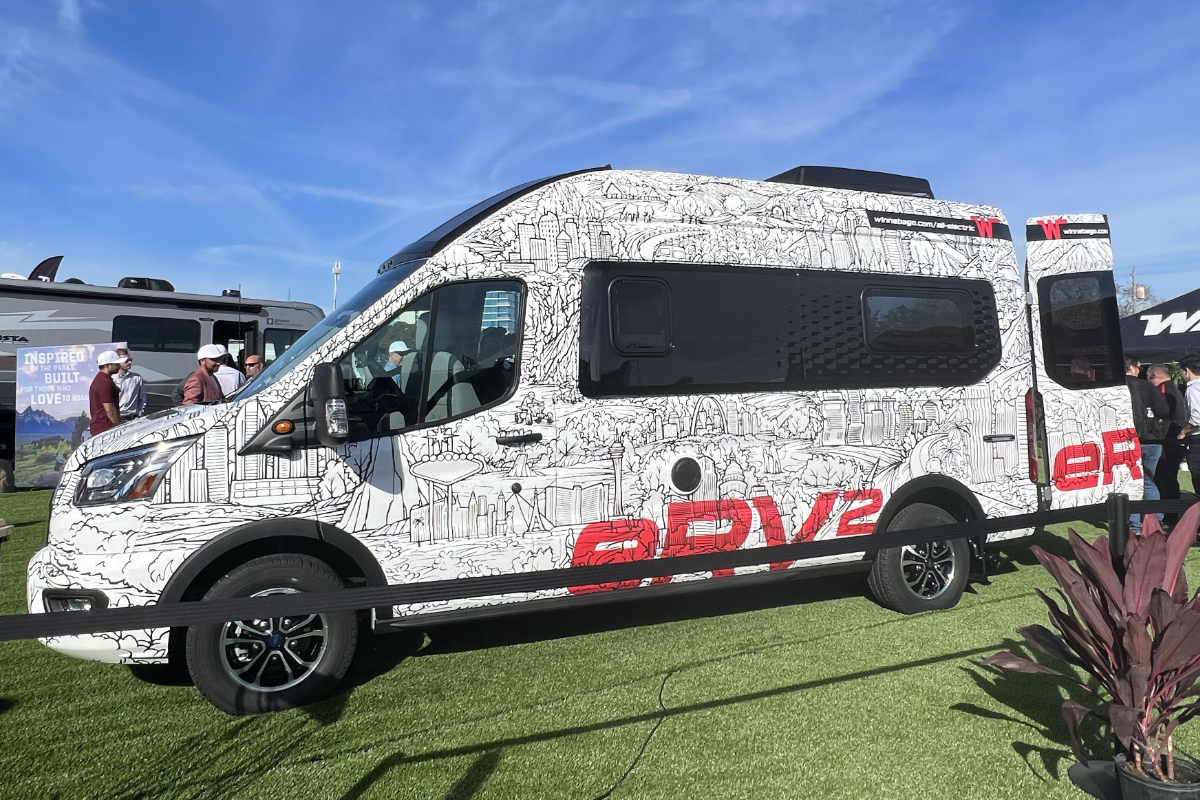
Photo Credit: Kelsey Glennon
First Look
The eRV2 is compact and not nearly as broad as some other Class Bs. That makes it more agile than you might expect at first glance. The exterior features a unique wrap that Winnebago says is meant to inspire travel and reflect the destinations that campers most want to visit. This design sets it apart from the often-monotone looks of other camper vans, and you instantly know you’re dealing with a different beast.
You’ll also notice a sloped roof showcasing a full array of solar panels which charge house batteries. The vehicle can generate up to 900 watts of electricity from the sun using its factory-installed solar cells. That power is stored in a 15-kilowatt-hour battery pack and is used to run the onboard appliances and the eRV2’s motors.
At 5 foot-5 inches, I wasn’t nervous about getting behind the wheel of this rig. Its size was approachable and not unlike stepping into the cab of a traditional van or my own Ford F-150. In fact, the vehicle rides on Ford’s well-regarded Transit Van platform, which should inspire confidence in veteran RVers and newcomers alike.
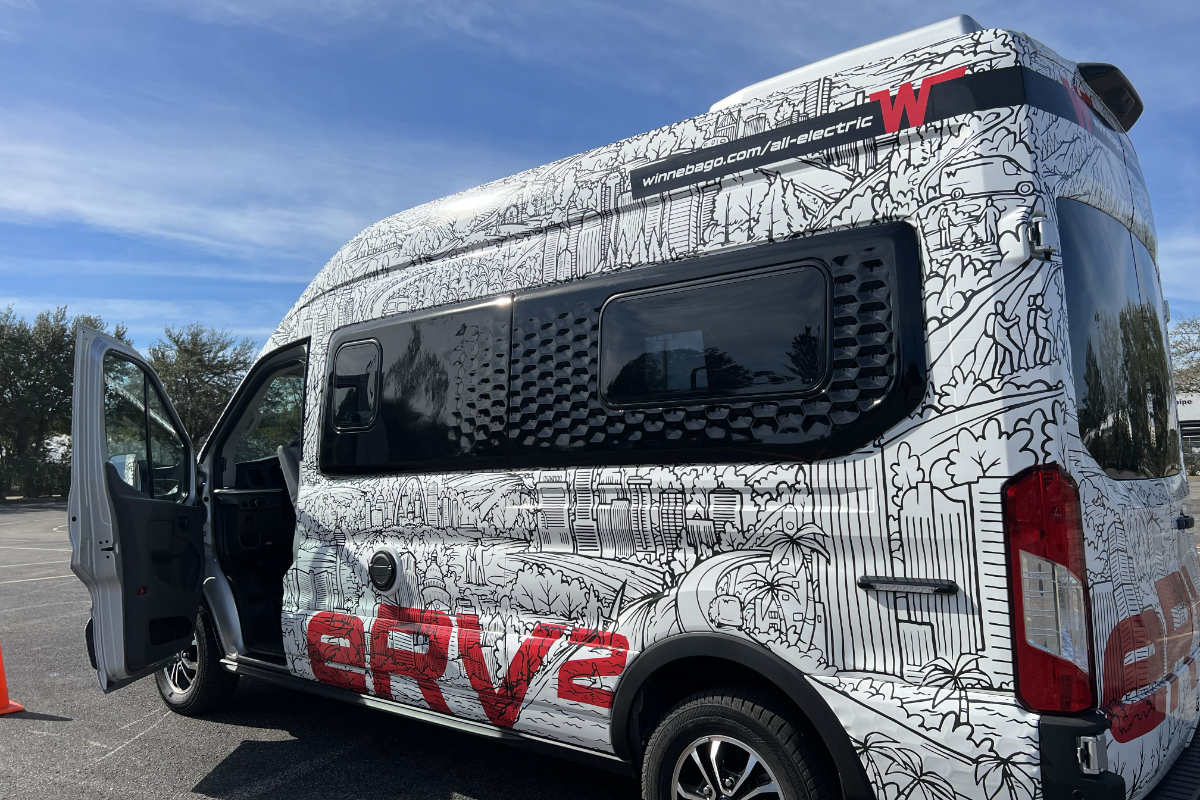
Photo Credit: Kelsey Glennon
Behind the Wheel
Once behind the wheel, the driver’s seat offers a partial view in the rearview mirror through the windows in the back door, but long towing-style mirrors provide a comfortable view of the road. For even better visibility, the coach comes equipped with a backup camera system that will feel familiar to Ford owners. It features onscreen guidelines to help judge distance and angles and a full view of the street behind the vehicle. It also shows a bird’s eye view, which is handy when parking in tight spaces.
The eRV2 uses a keyless ignition that fires up the vehicle’s electric motors at the touch of a button. Since it doesn’t have an internal combustion engine, the camper van is virtually silent at all times. The transmission is operated using a dial on the right side of the steering wheel, allowing drivers to switch gears with a twist of the knob. Just turn it to “D” when you’re ready to get going.
The first thing I noticed as I took off down the road was the silence from under the hood, even when the vehicle was accelerating. A digital dashboard displays how much range is remaining at any given time and the current state of the charge on the main battery. According to Winnebago’s official specs, the eRV2 can travel up to 108 miles on a single charge. We’re told that is a conservative number, however. The vehicle has an eco-mode that aids the driver in getting the most out of the battery, and regenerative braking can extend the distance further.
When fully loaded and facing headwinds, the vehicle’s range is still in question, but on a sunny south Florida day, the van handled like any other.
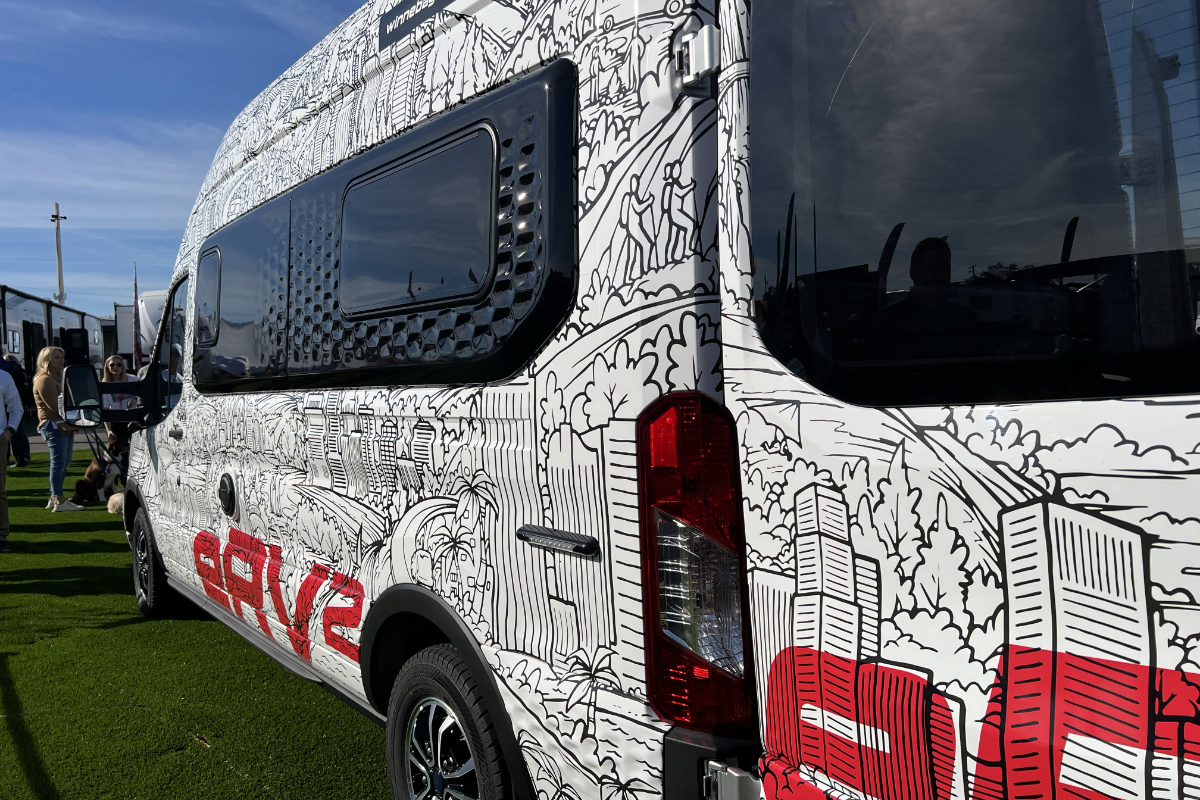
Photo Credit: Kelsey Glennon
On the Road
You won’t have any trouble accelerating to highway speeds in the Winnebago eRV2. The acceleration pedal, to my relief, wasn’t so sensitive that I found myself jerking the vehicle around as I tested it at different speeds. Whether I was braking quickly or pushing the pedal to the floor, the van responded smoothly and quickly.
I gave the wheel several sharp swerves to see if I could feel a top-heavy response to veering but instead encountered an agile vehicle with a low center of gravity. That is due in part to Winnebago’s proprietary IonBlade battery packs installed below the van’s floor. Despite that added weight, however, during my brief test drive, I couldn’t help but feel the RV’s handling felt like a standard van or even my F-150. Given that it’s sitting on a Ford Transit chassis, that came as no surprise.
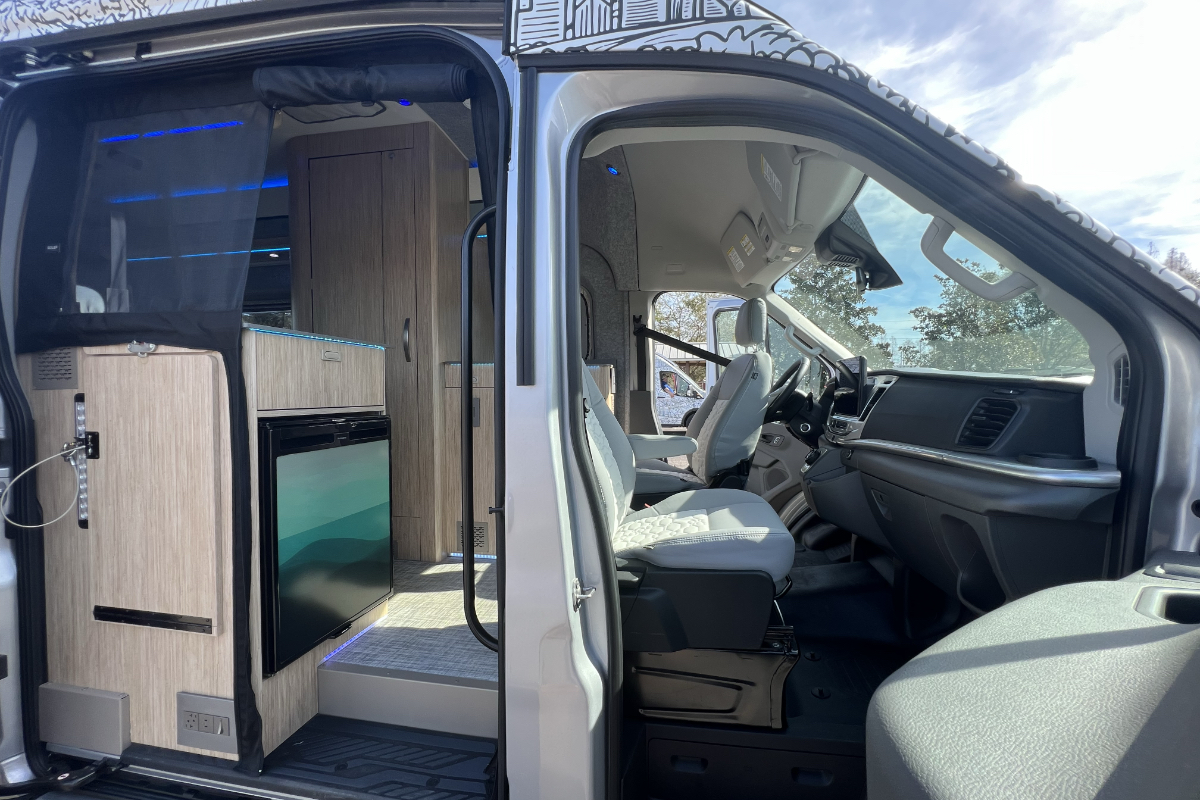
Photo Credit: Kelsey Glennon
A Peek Inside
After I returned to the parking lot and put the coach into park, I took a deeper look at its compact interior. Built with digital nomads in mind, the van’s modular tabletop dinette and swiveling captain’s chairs convert into drop-down desks, creating two individual workspaces. I apprecite that Winnebago designed the van for a pair of travelers, each of which may need to get some work done while on the road.
Modern technology like wireless device charging, USB ports, and AC outlets are within easy reach throughout the coach. A digital monitoring station is integrated above the rear sliding door, granting control over everything from lights, interior temperature, fresh and gray water tank levels, current battery charge, and more. Those same features can be accessed using a Winnebago smartphone app that gives owners remote contorl over their camper.
In keeping with the eRV2’s environmental mission, Winnebago has even considered how much light pollution it creates while parked at the campsite. The interior lighting features customizable LEDs that can change color across a broad spectrum. For dark sky campers and photographers, a red light mode is essential for maintaining night vision. It is also less impactful on the local flora and fauna.
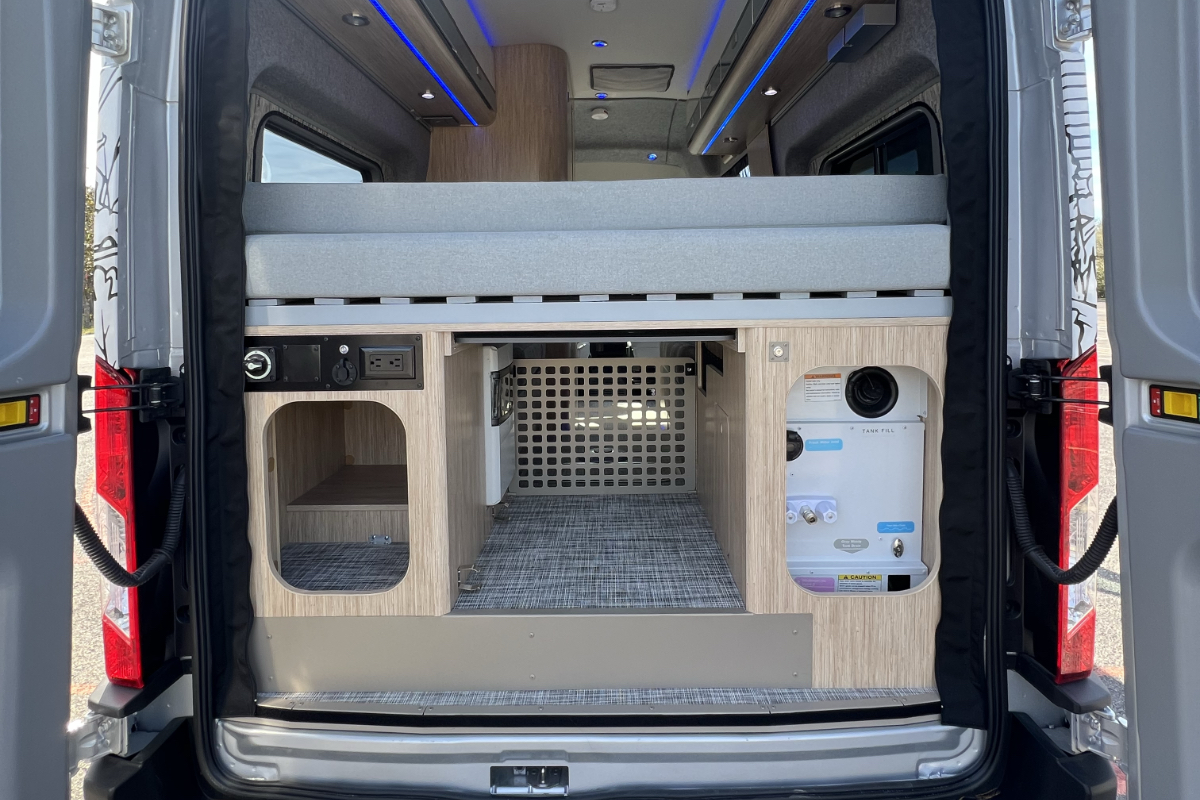
Photo Credit: Kelsey Glennon
Other small design details, like the plant-based fabrics and textiles used in the vehicle’s driver and passenger seats, also stood out. Recycled materials were evident in the flooring, trim, and mattress, too, all in an effort to go a little easier on the planet. Winnebago’s goal wasn’t just to eliminate emissions from the RVs motors but also to make the vehicle more sustainable overall.
You’ll find more storage and access to the holding tanks, outdoor shower, and winterization zone in the coach’s rear garage. A removable grate, which can be customized with additional pouches and storage add-ons, separates the under-bed area. Use it as a kennel, or remove it entirely to make room for a low-profile watercraft or collapsible bike.
You won’t be enjoying sunsets on the roof of this coach, as there’s no ladder, nor is it conducive to lounging, given the solar panels that occupy its surface area. Cleaning snow or debris off the roof will require owners to bring their own ladder, along with a long-handled broom.
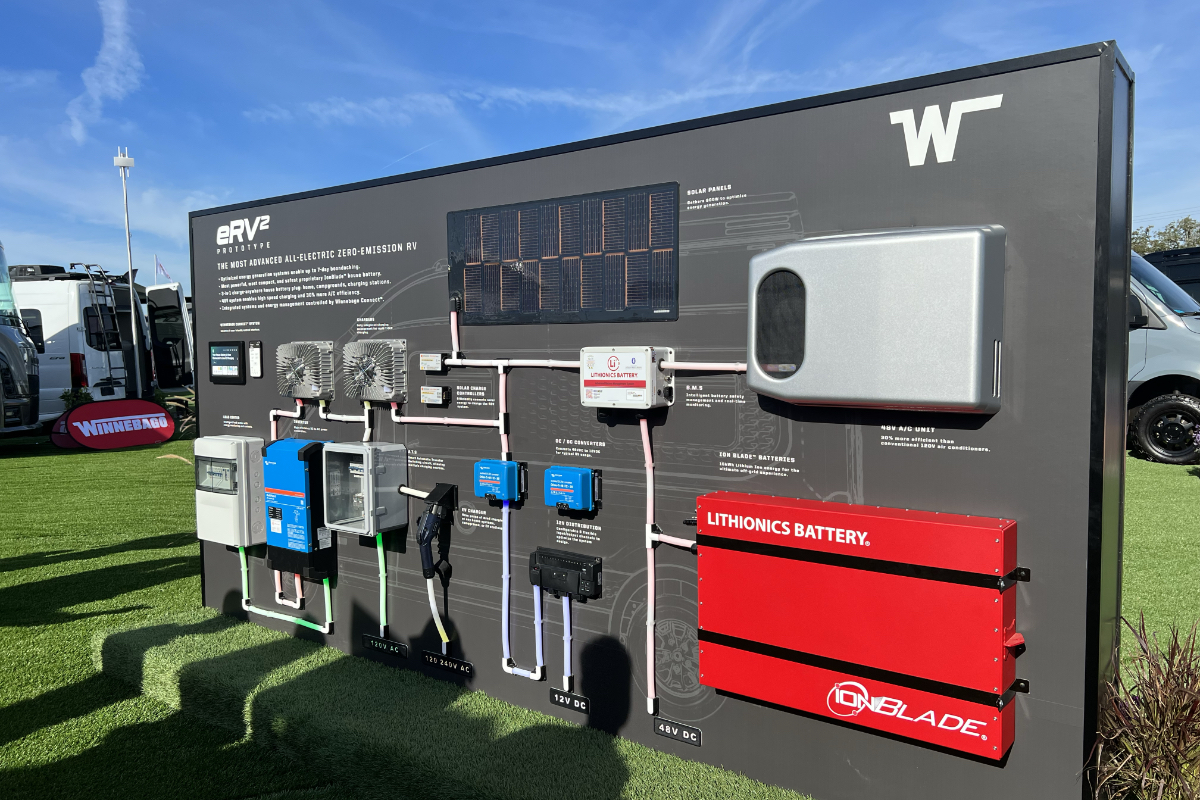
Photo Credit: Kelsey Glennon
After Thoughts
The eRV2 is exciting and fun to drive; there’s no doubt about that. Though when we’ll see it hit the customer market remains to be seen. Winnebago says it will have further announcements on that front later this year and is committed to bringing an all-electric RV to the masses.
As I watched thousands of prospective RV owners mill about the Tampa RV show, I wondered if emissions were top of mind and if they queried the manufacturers and dealers at the show about their environmental impact. Demand drives the market, so are RVers wanting a more sustainable RV, or are they more dazzled by Corian countertops and remote-controlled storage bays? That was hard to tell.
The challenge for Winnebago might not be to build the first electric RV with a reasonable range (I have no doubt they’ll get there) but in the ability to create the electric infrastructure to support it. The eRV2 won’t be a functional product if there is nowhere to charge it. Though you might see EV charging stations prevalent in urban hubs, it’s the RV’s natural environment – namely campsites – that gives me pause. How quickly will campground owners rush to install chargers at their pedestals?
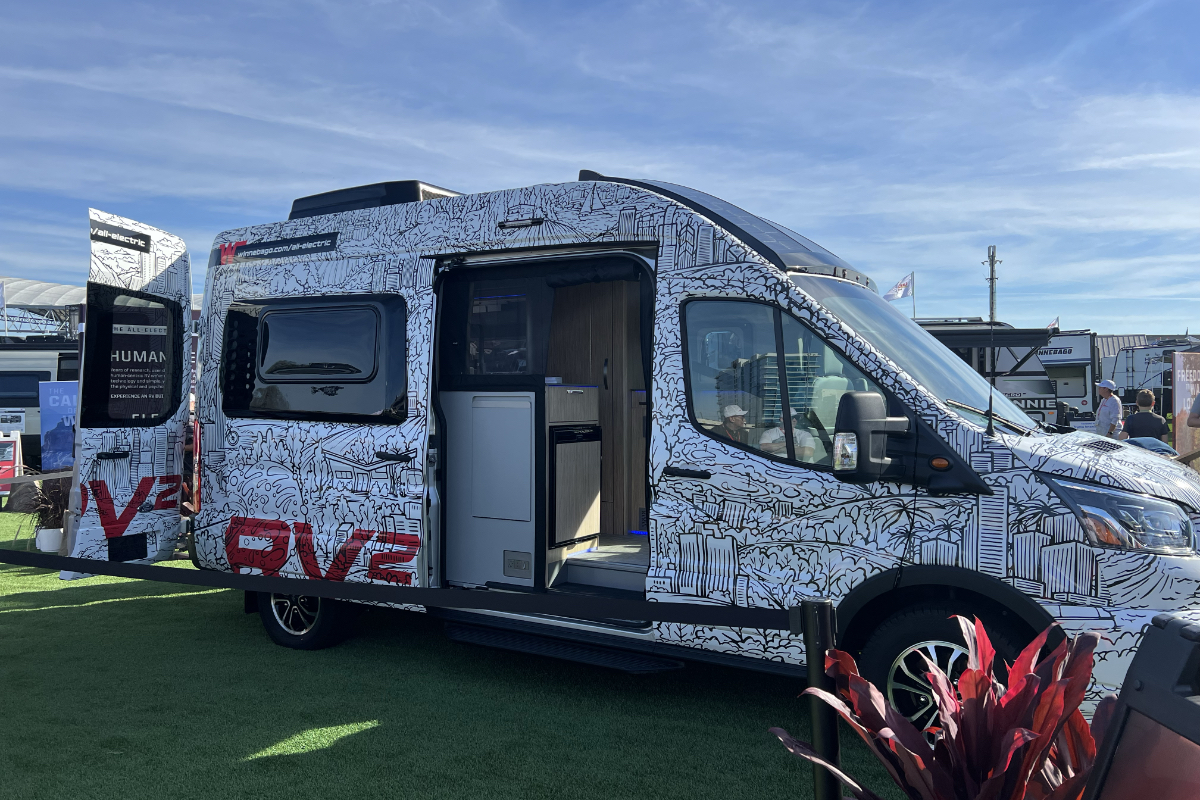
Photo Credit: Kelsey Glennon
With the current range of the eRV2, taking this rig on a cross-country trip just doesn’t seem feasible. I’m imagining the trek across West Texas or a drive into Big Bend and shuddering. In fact, even a short getaway could be a challenge. Without periodic charging points every 80-100 miles (more regularly if you suffer from range anxiety) and the patience to wait 45 minutes (80% charge) to 3 hours (full charge) for the batteries to top off, your route options are limited.
We’re fans of slow travel, but as it stands now, traveling in an electric RV may slow things down too much. Winnebago notes that, unlike in a regular vehicle, the eRV2 offers a lot of other things to do while you wait for the batteries to charge, including cooking a meal, taking a nap, or doing some work. Those do sound like better options, but not when you have to repeatedly stop every 90 minutes or so.
That said, Winnebago isn’t content with the current range of its camper van and plans to continue to iterate it before making it available to consumers. Until then, the company is also focusing on a holistic suite of usability features and putting the coach through rigorous user testing. That dedication to product research and customer satisfaction is reassuring and a hallmark of the brand. It also bodes well for the future of the eRV.
Winnebago is wise to develop a sharp product before other pieces of the puzzle—namely charging infrastructure—have fallen into place. As that infrastructure continues to expand, the company will be ready and waiting to meet a wide-open market and keen demand from conscientious campers. And when the final version of the eRV does come to market, we’ll be more than ready to welcome it with open arms.

